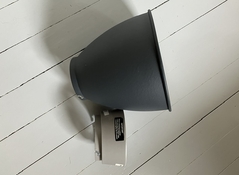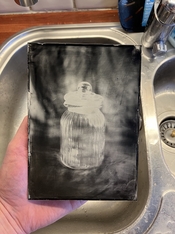I am look for reflectors to intensify the light output when shooting collodion wet plate with strobes.
I have three Elinchrom strobes. All with a ”standard” reflector 160mm in diameter and 60 mm in depth.
I have done some tests and for a decent(highly subjective of course) exposed plate I need a f/16 reading at ISO 3 set on my Sekonic flash meter. With f/5.6 lens aperture. And it seems to be pretty consistent for high contrast/low key photos.
That means, using one strobe, must be no more than 400 mm away from the subject! Thats a bit impractical.
Are there any light shapers that can intensify the light output with about 2 stops? That would increase the distance from strobe-subject to 800mm, right?
What kind of reflector should I look for? Is bigger always better?
And of course for still life you can always fire the strobe multiple times.
I have three Elinchrom strobes. All with a ”standard” reflector 160mm in diameter and 60 mm in depth.
I have done some tests and for a decent(highly subjective of course) exposed plate I need a f/16 reading at ISO 3 set on my Sekonic flash meter. With f/5.6 lens aperture. And it seems to be pretty consistent for high contrast/low key photos.
That means, using one strobe, must be no more than 400 mm away from the subject! Thats a bit impractical.
Are there any light shapers that can intensify the light output with about 2 stops? That would increase the distance from strobe-subject to 800mm, right?
What kind of reflector should I look for? Is bigger always better?

And of course for still life you can always fire the strobe multiple times.






 This was 12 sec. Is it actually fogging on the plate? If you mean all the light patches around the jar it is the reflections/highlights in the satin backdrop you see.
This was 12 sec. Is it actually fogging on the plate? If you mean all the light patches around the jar it is the reflections/highlights in the satin backdrop you see.